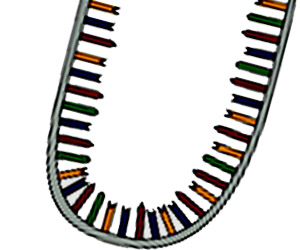


Ribonuclease (RNase) are all around and need special efforts to create a ribonuclease free environment. RNases being very stable and resistant to most of the inhibitors are difficult to inactivate. To obtain good quality RNA, RNase control should be maintained from very beginning of RNA purification and the process that follows. A handful of listed tips here could be useful to gain success in maintaining high quality RNA.
1. Use sterile disposable RNase free plastic consumables. Non-disposable plastic ware should be treated before use to inactivate RNases. Non RNase free plastic ware should be rinsed properly with NaOH (0.1 M), EDTA (1 mM ) followed by RNase-free water. On the other hand chloroform can be used to rinse chloroform-resistant plasticware and glassware to obtain RNase free consumables. Heat resistant glassware must be clean with detergent, washed and baked at 180°C for several hours to inactive RNases.
2. Always wear gloves to avoid RNAse contamination through hands as RNase is likely to be introduced from skin, dust, reagents and samples.
3. It is recommended to assign a area in lab as ‘RNA Work Area’ to handle RNA samples only and to handle with dedicated pipettes, RNAse free tips, RNAse free plastic and glass ware.
4. Proper microbiological aseptic techniques must be used to work with RNA.
5. Use DEPC-treated water. If DEPC-treated water or solutions are prepared in-house, it is necessary to autoclave water and solutions before use to degrade DEPC.
6. Use of RNAse inhibitors are recommended for samples with possibility of endogenous RNase.
7. Upto 1 year RNA storage may be done in RNase-free water or TE buffer at -80ºC. RNA samples may be stored as ethanol precipitates at -20°C for long terms. On bench, use ice bucket to temporarily store RNA samples on ice when working.

Feel free to ask Query